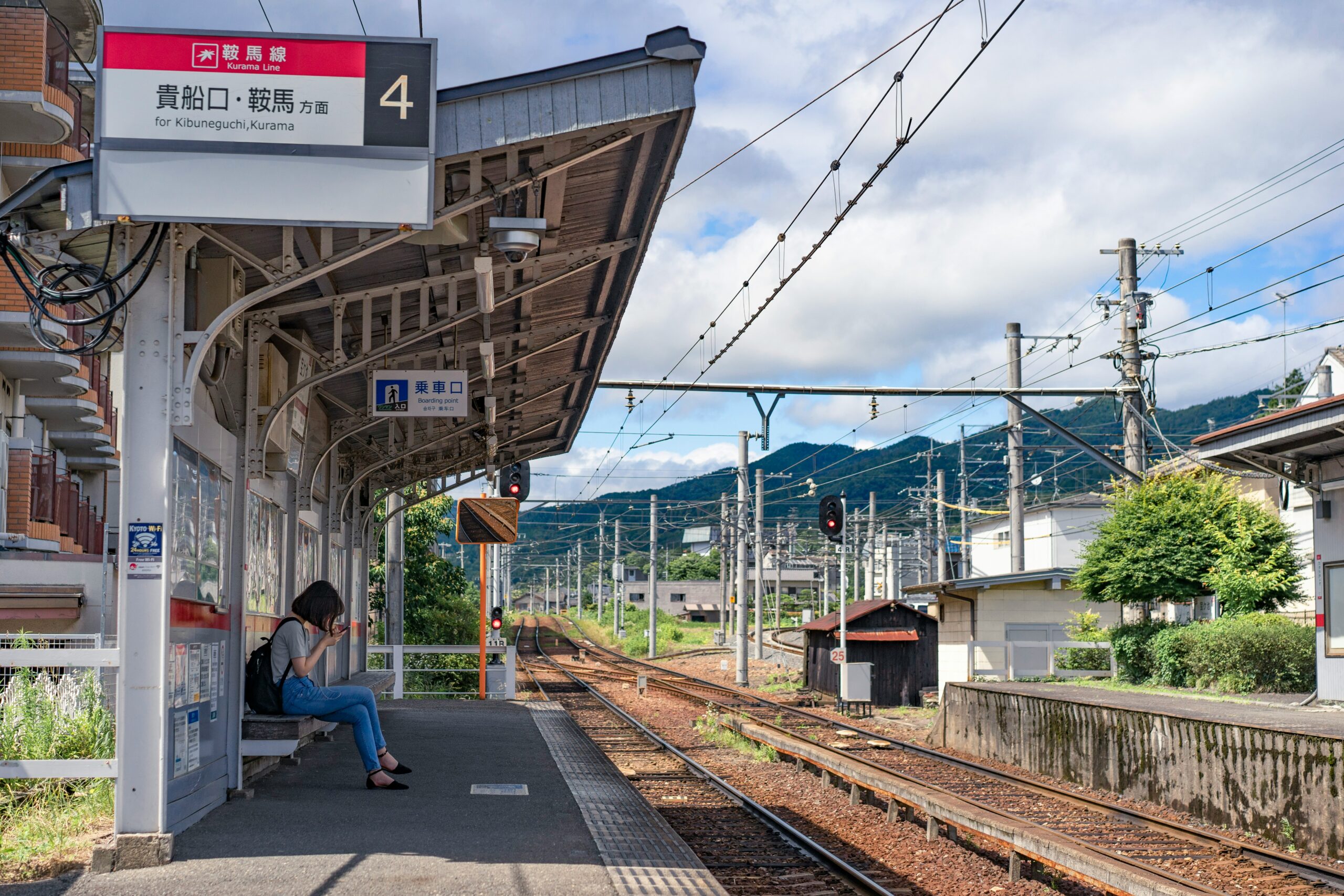In the land of the rising sun, where ancient traditions fuse seamlessly with the bleeding edge of technology, Japan’s train stations stand as beacons of punctual precision, a testament to the nation’s unwavering commitment to efficiency and reliability. From the bustling platforms of Tokyo’s Shinjuku Station to the sleek, bullet-shaped Shinkansen trains slicing through the countryside, Japan’s railway system is a marvel of engineering and operational excellence. This article delves into the inner workings, cultural significance, and future visions of Japan’s railway marvels, offering a comprehensive look at what makes the country’s trains a symbol of punctual perfection.
Japan’s Railways: A Symphony of Timeliness
Japan’s railways operate like a finely tuned orchestra, with each train arriving and departing with breathtaking punctuality. The secret behind this timeliness lies in meticulous planning, state-of-the-art technology, and a deeply ingrained cultural respect for time. Train schedules are planned to the second, and delays are so rare that they make headlines when they occur. This precision ensures that commuters can rely on the train service for their daily routines without the slightest worry of being late. It’s a logistical ballet that showcases Japan’s mastery over time and its unwavering dedication to service excellence.
The Heartbeat of Tokyo: Shinjuku Station
Shinjuku Station, the world’s busiest transport hub, pulses with the energy of over two million passengers each day. Navigating its vast network of platforms and exits can be daunting, but it stands as a monument to Japan’s urban planning and crowd management. Shinjuku is more than a station; it’s a microcosm of Tokyo itself, surrounded by skyscrapers, shopping centers, and a labyrinth of underground passages. Despite its complexity, the station operates with remarkable efficiency, a testament to Japanese precision and the meticulous organization that keeps the city moving smoothly.
Osaka Station: Where Modernity Meets Tradition
In the heart of Japan’s second-largest city, Osaka Station serves as a gleaming gateway where tradition and modernity collide. The station has undergone significant transformations, evolving into a multi-story complex that marries sleek, contemporary architecture with the warm, inviting spirit of Kansai. Beyond its function as a transport hub, Osaka Station has become a vibrant community space, showcasing live performances, art exhibitions, and a vast array of dining and shopping options. It exemplifies how train stations in Japan are more than just points of transit; they are cultural landmarks and centers of community life.
The Punctuality Phenomenon: Behind the Scenes
The astonishing punctuality of Japan’s trains is the result of relentless behind-the-scenes efforts. Train operators undergo rigorous training, mastering the art of keeping to the schedule down to the second. Advanced signaling technology and meticulously maintained tracks ensure smooth operations, while comprehensive contingency plans cover unexpected events. This operational excellence is complemented by a cultural mindset where time is respected and efficiency is paramount. The collective effort of thousands ensures the railway’s clockwork precision, making every timely train departure a testament to Japan’s organizational prowess.
Shinkansen: The Bullet Train’s Timeless Journey
The Shinkansen, or bullet train, is the crown jewel of Japan’s railway system, embodying speed, safety, and punctuality. Since its debut in 1964, the Shinkansen has revolutionized high-speed rail travel, connecting major cities across the country with its aerodynamic design and cutting-edge technology. Traveling at speeds of up to 320 km/h, it maintains an impeccable safety record and an average delay of less than a minute. The bullet train not only symbolizes Japan’s technological achievements but also its commitment to environmental sustainability, offering a greener alternative to air travel.
Kyoto Station: A Blend of History and Innovation
Kyoto Station stands as a striking contrast to the ancient temples and tranquil gardens that define the city. This architectural marvel blends traditional Japanese aesthetics with futuristic design, creating a space that is both functional and visually stunning. As a key hub in Japan’s travel network, Kyoto Station facilitates the exploration of the country’s rich cultural heritage while embodying the innovative spirit that drives Japan forward. It’s a testament to the country’s ability to honor its past while embracing the future.
The Unsung Heroes: Japan’s Train Conductors
Japan’s train conductors are the unsung heroes of the railway, embodying the dedication and precision that underpin the system’s success. Distinguished by their crisp uniforms and impeccable manners, they ensure the safety and comfort of passengers while keeping trains running on schedule. These conductors undergo extensive training, learning to handle everything from routine operations to emergency situations with calm efficiency. Their role is critical in maintaining the high standards of service that passengers have come to expect, making them an indispensable part of Japan’s railway story.
Navigating Nagoya: Efficiency at Every Turn
Nagoya Station, a key node in Japan’s railway network, exemplifies efficiency at every turn. Serving as a crucial junction between Tokyo, Kyoto, and Osaka, it handles a vast number of passengers with seamless precision. The station’s design facilitates smooth passenger flows, minimizing congestion even during peak travel times. Nagoya Station is not just a transit point but a destination in itself, offering a wide range of facilities that cater to every need, from shopping to dining to business services. It reflects the comprehensive planning and attention to detail that characterize Japan’s approach to public transport.
Sapporo Station: Gateway to Hokkaido’s Wonders
Sapporo Station serves as the gateway to the natural wonders and culinary delights of Hokkaido. This northernmost station on Japan’s railway map combines functionality with the warmth of Hokkaido’s hospitality, welcoming visitors to explore the island’s vast landscapes and rich culture. Sapporo Station is a hub of activity, connecting travelers to skiing resorts, national parks, and seafood markets. It exemplifies how Japan’s railway system extends beyond transportation, offering gateways to experiences that define the country’s diverse regions.
The Art of Precision: Engineering Japan’s Rails
The engineering prowess behind Japan’s railways is a key factor in their operational excellence. Precision engineering ensures that tracks, trains, and signaling systems work in perfect harmony, minimizing the risk of delays and accidents. This focus on quality and detail extends from the high-speed Shinkansen to the local commuter trains, embodying a philosophy where reliability and safety are paramount. The relentless pursuit of engineering perfection not only supports the system’s efficiency but also inspires innovation, driving the continuous evolution of Japan’s railways.
Hiroshima’s Hub: A Testament to Resilience
Hiroshima Station stands as a symbol of resilience and renewal, playing a vital role in the city’s recovery and growth since World War II. Serving as a key gateway to the Chugoku region, the station connects history with the present, welcoming visitors to explore Hiroshima’s Peace Memorial Park and its message of peace. The station’s modern amenities and seamless connectivity reflect Hiroshima’s transformation, showcasing the city’s enduring spirit and its commitment to a future defined by hope and perseverance.
The Future of Train Travel: Japan’s Vision Unveiled
Japan’s vision for the future of train travel is as ambitious as it is innovative. Plans for even faster bullet trains and AI-driven operations aim to set new standards in speed and efficiency. The commitment to sustainability is equally strong, with initiatives to reduce the environmental impact of rail travel through cutting-edge technology. As Japan looks to the future, its railway system continues to embody the ideals of punctual precision, technological advancement, and harmonious coexistence with the environment, paving the way for a new era of train travel.
Japan’s train stations and the intricate network of rails that connect them are more than mere feats of engineering; they are a reflection of the country’s soul. Through a blend of punctual precision, technological innovation, and a deep-seated respect for tradition, Japan’s railway system continues to fascinate and inspire. It stands as a living symbol of efficiency, resilience, and a forward-looking vision that moves a nation—and indeed, the world—towards a more connected and sustainable future. As we have journeyed through the marvels of Japan’s train stations, from the heartbeat of Tokyo to the resilient hub of Hiroshima, it becomes clear that Japan’s train stations are not just points on a map, but milestones on an endless path of progress.








